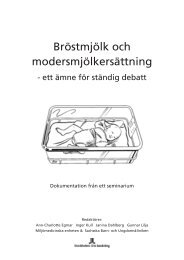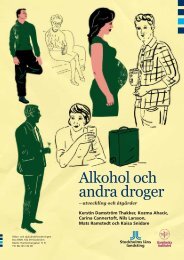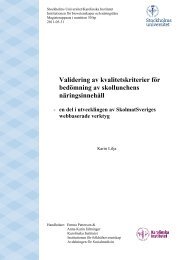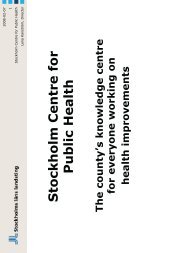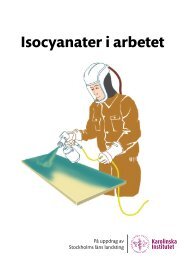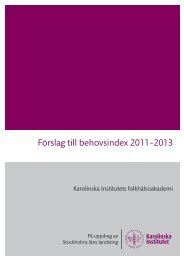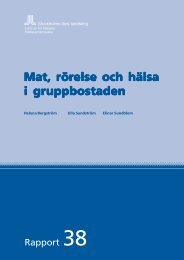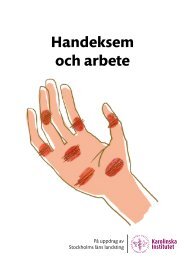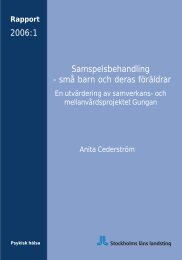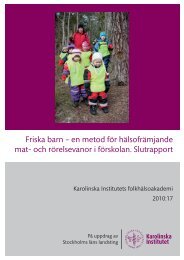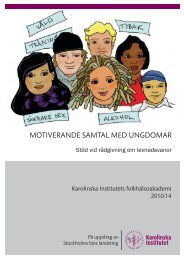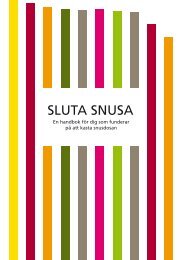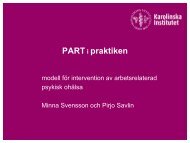Jämlikhet och hälsa i skolan.pdf
Jämlikhet och hälsa i skolan.pdf
Jämlikhet och hälsa i skolan.pdf
You also want an ePaper? Increase the reach of your titles
YUMPU automatically turns print PDFs into web optimized ePapers that Google loves.
Project Project summary summary in in English<br />
English<br />
Over the last years there has been an ongoing discussions on ways to increase<br />
the conditions for equality in health between the major players in the public sector<br />
in Sweden. School has been identified as an arena where health promotion<br />
interventions for children and youth are possible as well as effective. The Association<br />
for County Councils took the initiative to start this project on Equality in<br />
Health in Schools.<br />
Useful indicators and/or standards that are meaningful within the school setting<br />
were at the heart of the project. The aim was to support the schools to identify<br />
determinants for equality health and possible measurable indicators on equality<br />
in health within their schools. The identification process should then lead to the<br />
development and implementation of strategies to improve equality in health in the<br />
school.<br />
Three schools participated in the project, two in municipalities within Greater<br />
Stockholm and one in a smaller town. All schools are publicly funded and have<br />
groups of children who are living under difficult social circumstances. More so the<br />
schools in greater Stockholm where the catchment areas also are characterised<br />
by a larger and rather new multi-ethnic population. The schools were given some<br />
economic support for the extra hours put in by the project leaders in the schools<br />
as well as some theoretical input. There was a project co-ordinator to support<br />
and document their work.<br />
All three schools have managed to develop measurable indicators as well as<br />
strategies to work with the issues concerned. They have developed methods to<br />
measure the indicators, which can be used within the schools henceforth. Of<br />
special interest is the fact that they independently have identified the same or<br />
very similar areas of intervention: nutrition and eating habits, sleep, stress, and<br />
the work environment in school, self-confidence/image of self and lack of physical<br />
activity. All of the chosen indicators are well within the later established Swedish<br />
public health goals.<br />
The interventions in the schools have been carried out within the framework of<br />
the set curriculum for Home economics and Physical education, special health<br />
education hours or in special discussion groups for girls. Pedagogic tools have<br />
been developed to help the children describe their life-styles and reflect on them.<br />
These tools were also used for measuring purposes and matched against the<br />
result on the relevant national standard school test. Most students that rated low<br />
on the indicators also had poor results. The pedagogic tools also proved valuable<br />
45




